Life at Camp Trinity 76 Years Ago
Seemed Like Heaven Even Then
By Robin C. Harris
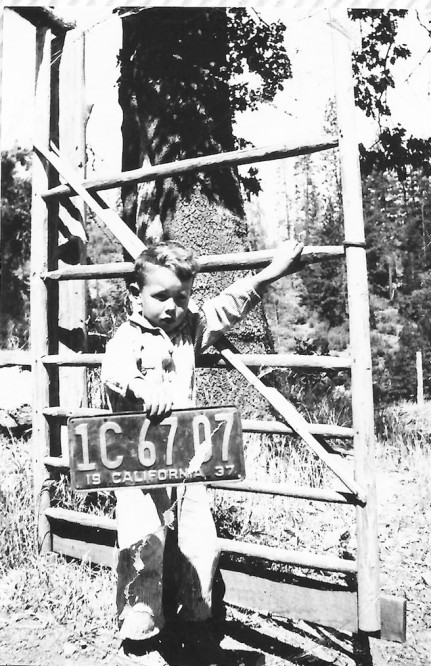
“Agoutapflah.” That was the nonsense word that campers used to greet each other in 1938. Funny, the things you remember.
This story begins the previous winter of 1937-38. I would not turn five for three or four months yet, but I knew what was going on—some of the time, anyway. I remember clearly the evening this nice old couple came to our home in the Berkeley hills. I say “old” because they were older than my parents. To a four-year-old, most people are old. I now know that Grover Gates was only in his mid-forties.
I didn’t know then, but later learned that they were there to discuss the recommendation accorded to my parents, Beecher and Cornelia Harris, by Graham and Dorothy Loofbourow who had worked at Camp Trinity the summer before. This would be a similar position. It would also be my first real summer vacation. Always before, I was farmed out with relatives.
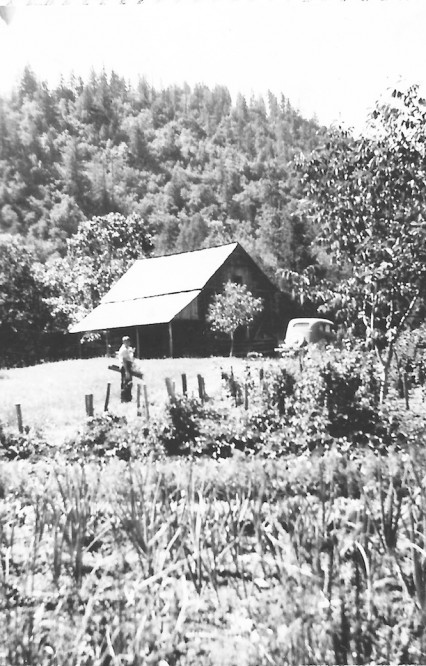
From the cloister of the white brick house on Grizzly Peak Blvd., this was culture shock – but in a good way. In later years, from that first experience at Camp Trinity, I came to appreciate what must be going through the mind of each new camper on that long journey through Trinity County—a trip which took far longer than the charter buses of today. The 18-mile trip from Hayfork to camp was dirt and gravel all the way, and in most places someone had to back up to a wide spot to deal with an oncoming car (of which there were very few). I’m sure I set a record for the number of times I asked whether we were “there yet.”
Near Nine Mile Bridge I would see my first ever rattlesnake. My father ran over it, and then we got out of the car to inspect it more closely and learn to respect this menace. This did not augur well for my introduction to the wilds, and all the woodland creatures poised to eat me.
But when we pulled up to Camp Trinity, I forget all about the road and the snake, as I saw, for the first of many times, that captivating lodge—virtually a cabin, it seemed to me—and a two-story outbuilding to its left. No impressive entry of rock and ivy in those days—only a pole fence and gate, over which hung an orange and black sign, “Camp Trinity for Boys.” We would live here this whole summer! It was magic.
We were greeted by the kindly couple who visited our home the previous winter. Ah! It all came together—I understood now. We were housed in the second floor of what was then called Gates Gables. Accessed by an outside stairway, it was a converted barn which stood in the middle of what is Gates Gables Lawn today, and it was our home for two months. On either side of this building were vegetable gardens.
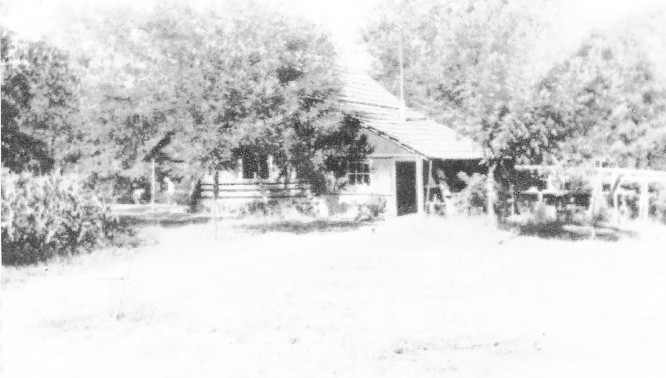
The lodge and its furnishings were built by Erma Gates’s father, Mr. Leedy, and I remember how impressed I was that people could create so much beauty from natural resources. I later learned that Mr. Leedy had been present as recently as the beginning of summer, 1938, to put his finishing touches on things to be enjoyed by us that captivating summer.
My recollection of Camp Trinity in 1938 is a mixture of impressions and specific experiences. For example, while I cannot recall a specific meal, I remember clearly that we ate most meals at a couple of long tables just outside the back door of the Leedy Lodge living room—not on a concrete slab, but on a packed, raised pad of dirt and gravel, and that the junior counselor seated next to me always placed his hat in the space beneath my raised rustic seat which locked onto the bench. That had to have been John Phillips who had been a camper almost since the inception of the dream, which began in 1930.
I don’t remember a specific campfire program, either, (except for Jim Gates capturing a panther in Big Canyon) but I recall that these programs were held in the Leedy Lodge living room where a huge fire burned in the rock fireplace.
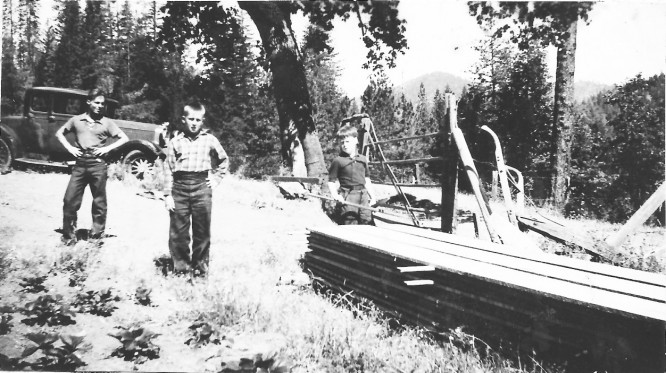
In the area of today’s Gates Gables, from the kitchen to the library, was a long shop area, with a shed roof, open to the front and back, and divided into three or four stalls—each devoted to some form of creativity. The shop was a marvelous structure where all forms of creative endeavor took place, from art to blacksmithing. At one end, near the present library, was the darkroom. At the other, sat a Model T Ford, in its retirement, up on blocks. A shed at the entrance to camp housed the Gates Buick and a tractor. There wasn’t much else in the way of structures, but this was enough.
Another old car, a 1928 Dodge Victory Six, sat resting and rusting, at the top of the upper pasture. I was in seventh heaven with two old automobiles to crawl over and under and “drive.” At the age of five, I was already a car nut—a passion that developed early and never left me. Grover Gates would have told me I’d be better off enamored of horses instead—advice I’m sorry I didn’t get.
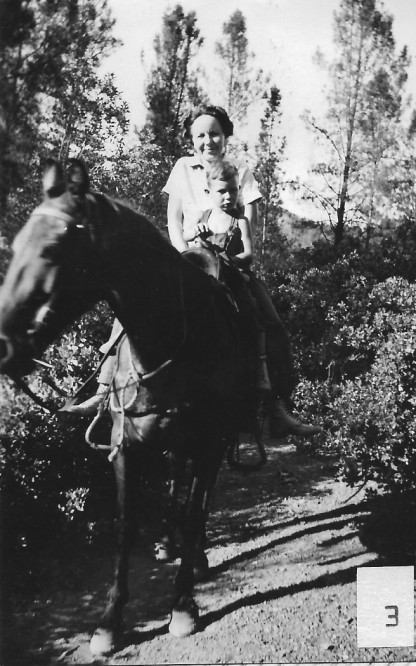
In Berkeley, I had the run of the neighborhood – sometimes six to eight blocks from home, and I walked down the hill a mile to school through the residential streets (things were different then), so at Camp Trinity I was not easily contained. I was everywhere. When I was on horseback, which was frequently, I was on Buster. I remember only two horses, Buster and Star. I’m sure there were more, but these two figure prominently in my memory; and of the two, Buster’s gentle nature was somewhat more appropriate to this novice equestrian. On the wall of my den today is a framed 8 x 10 photograph of my mother and me on Buster on our way to the Bar to visit my father who was camped there with a group. It was taken by an older camper and printed and enlarged in the darkroom. Veteran camper Dudley St. John was the darkroom expert that summer. I was enchanted by the cabin at the Bar, and I loved Mr. Shules, Grover’s stepfather, who lived there. I think he must have been the oldest man I had ever met up to that time in my life. It amazed me that people could live happily so far from the rest of “civilization”—whatever that meant. I understand it better today.
This was a camp for boys—twenty of them. The maximum had been twelve, but that number was increased to 20 in 1937. All lived in what is the girls’ area today. The bathroom was a two-holer outhouse. The shower I don’t recall, but it must have been equally primitive. This was no Club Med. (Nor is it today; nor would we want it to be.)
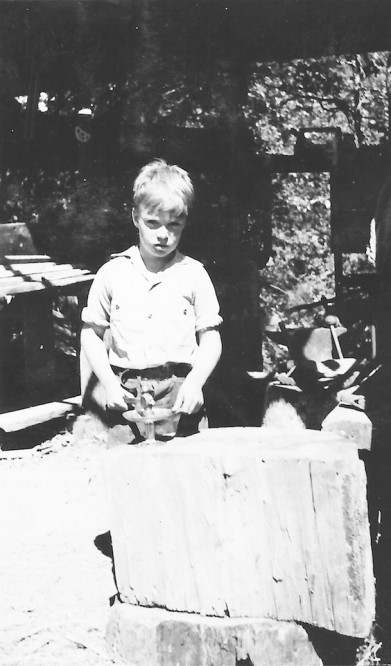
The youngest camper, David MacAlpine (or “Davie MacAlpeenie”), was nine. He was stuck for some of the time playing with me, and it was clear that he would rather have been someplace else. My consistent playmate, though, was Jean Gates, the only girl on the ranch, and just a few months younger than I. The previous summer she had Janet and Ann Loofbourow to play with; this summer she was stuck with a boy. Tough life.
My mother’s specialty was puppets, although I’m sure she did more than that—especially in the arts and crafts area. My father must have taken a lot of out trips, most of them to the Bar, because he was gone many nights. My mother would send written messages to him by courier, and he would send notes back to us in return. I remember well his project of having the boys carve throwing darts, which, once carved, were painted in the art “room.” We all read “Bambi” that summer, by Felix Salten and illustrated by Kurt Weise. Mr. Weise’s nephew, Walter, was a camper.
Other names occur to me now. I remember Peter Kennedy, Dick Gilroy, Red Parker, the Henley brothers, and Selby Marks (his second year at camp, I believe). And still more names surface: Hirshckind, Rankin, Henley—but they were only names. I cannot attach faces to them.
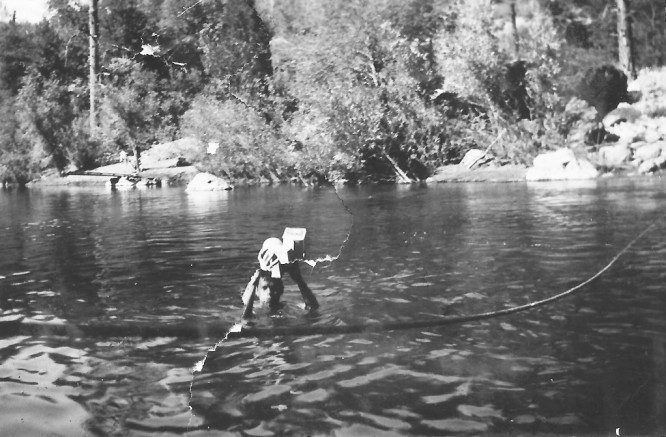
Hayfork Creek seemed miles away. To a few campers today, I guess it still does, but for me getting there was an experience. Getting back, even more so. Many days I had to be content with Grassy Flats Creek, and I remember resenting that because, really, Hayfork Creek was pure heaven once you got there. My mother and I usually rode Buster down to swim. The afternoon snack was delivered to the swimming hole and brought across the creek by someone treading water and holding it above his head. (There was no bridge. A heavy rope extended across the creek to accommodate non-swimmers.) Periodically, someone would shout, “Dead eel!” and everyone would scramble out of the water until it floated by.
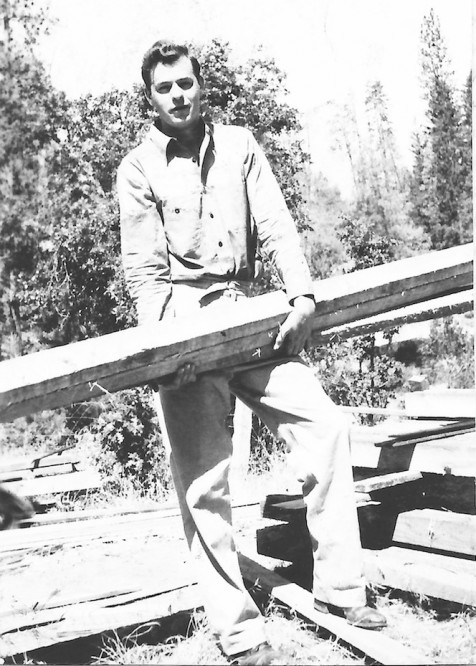
The camp medic that summer was a young intern from L.A., Donald Petit. “Doc” was my buddy. When I went to him with a minor abrasion, he painted a huge smiley face on my stomach with Mercurochrome. (What’s Mercurochrome, Mom?) That red apparition stayed with me most of the summer, because I was so proud of it that when it began to wear away, I would go back to Doc for a repaint.
Grover and Erma Gates celebrated their tenth wedding anniversary that summer. A great surprise celebration was planned by campers and staff; and as it was their “tin” anniversary, gifts were secretly created out of tin. I remember only a pair of hammered tin wall sconces, and the artifact I made for them—something vaguely resembling an ashtray. The ceremony was held one evening in Leedy Lodge, and I remember how delighted and humbled Grover and Erma were by the gesture. How did a five-year-old kid keep this event a secret for half the summer? I will never know.
We sang camp songs from a tiny, orange booklet, about 2 x 5 inches, containing our favorites: A Capital Ship, Blow the Man Down, A Cowboy’s Lullaby, The Three Black Crows, and Hol-Di-Ri-Di were a few. Now The Day Is Over was our closing number even then. I still have that little booklet.
Although I don’t remember much about our meals, it stands to reason that they must have been outstanding. Mayme Gates was in charge of the kitchen, and a Mrs. McMains was second cook. And fried bread was a staple even way back then, made by Mrs. Shules.
The Gates brothers were very much in evidence in those dates, for they had wintered at camp and at the Bar. Ray had the garden ready, Dewey was at the Bar, and Jim looked after the stock. I remember Cal, as well. He played the fiddle.
I could not have known, in those tender years, how important this paradise would become to me. I would be there at the end of World War II in 1945. I would visit there for days on end in 1952 and 1953, and counsel there in 1954 and 1955. Who could have known that I would meet the pretty counselor that became my wife, and that we would live there the year around from 1967-1969, or that our son, Dan, would become Camp Trinity’s very first third-generation counselor in the 1980s. That’s testimony to the lasting lure of that magical place.
Almost heaven then. Almost heaven now.
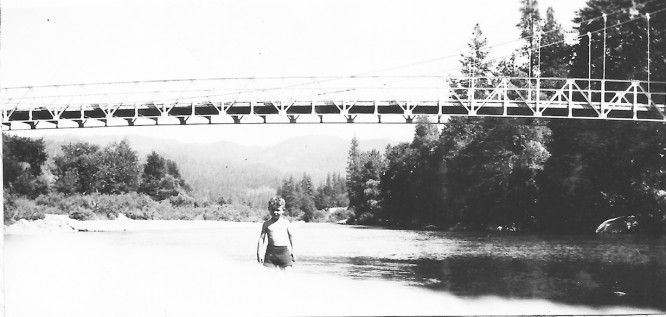


AT 8 YEARS, MY FIRST SUMMER WHICH I WANTED TO TRUNCATE AFTER ABOUT 4 HOURS… CALLING HOME ON THE PARTY LINE… ASKING MY PARENTS IF I COULD COME HOME… MY MOTHER SAID O.K. BUT “WHY DON’T U JUST TRY IT OUT FOR A COUPLE O’DAYS” TURNED INTO 9 WEEKS (6 WEEK REGULAR SESSION PLUS 3 WEEKS POST CAMP)… I DIDN’T KNOW HOW LUCKY I HAD BECOME …THAT WAS THE 1’ST OF 5 SUMMERS… I GUESS WHEN YOU ARE HOOKED, YOU ARE HOOKED EH ??? JUST A FEW MORE, SERVING TO THE LEFT, PASSING TO THE RIGHT, SATURDAY NIGHT DANCE, POWERED BY A GENERATOR, WHICH REGULARLY FAILED, COOKING YOUR OWN SUNDAY BREAKFAST (PANCAKES,EGGS) THE CEREAL AS U KNOW WAS MADE IN THE KITCHEN, THE SALMON I CAUGHT AND THE BLUE RIBBON I WON AT THE COUNTY FAIR RIDING MAESTRO !!! I TOOK A WHOLE LOT A PHOTOGRAPHS, SPENT A GOOD DEAL OF TIME IN THE DARKROOM !!! LAST BUT NOT LEAST… GROVER AND ERMA … GROVER’S WISDOMS AT THE END OF DAILY BREAKFAST, SOME STILL LINGER SUCH AS “A MESSAGE FROM GARCIA” (BTW, U ARE PROBABLY AWARE THAT A COUPLE OF JERRY’S KIDS EXPERIENCED THE TRINITY MAGIC) ALL 4 NOW – SOMEWHERE WITHIN THE RAINBOW !!!
thank you, robin, that was beautiful. I hope I see my 3rd generation up there as well.
Robin,
My summers there were the best of my life.
You were a friend and always looked after me when I was there in 1949-50-51.
Best years of my life.
I would like to know what the Sunday breakfast deep fried donut recipe is, if you remember them.
Robin,
What is the recipe for the Sunday breakfast deep fried dough things? I used to put honey on them, they were the best breakfast treat of my life!!!
You were the most friendly guy I’ve ever known also!!!
Thank you ,
Steve Newman